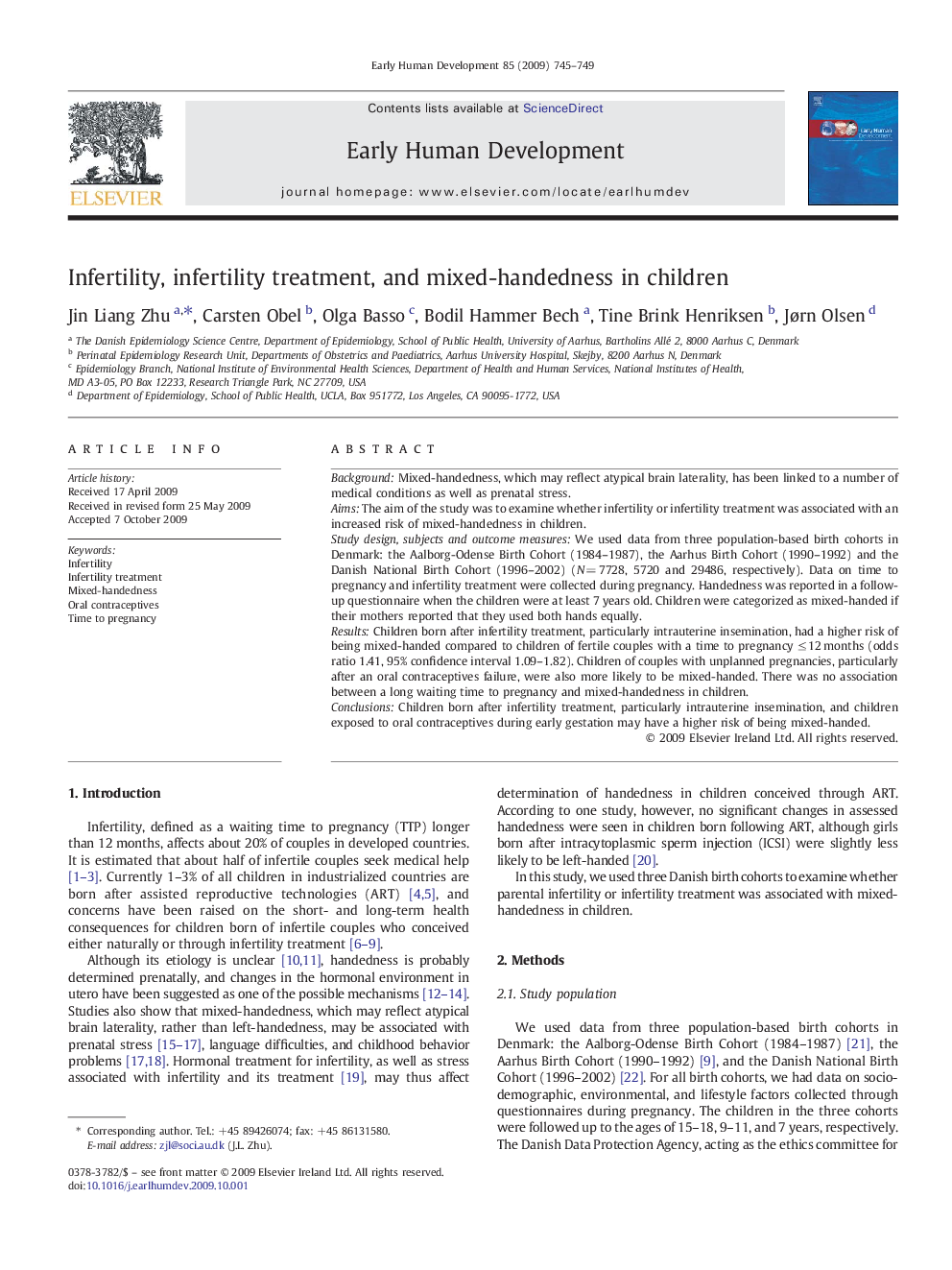| Article ID | Journal | Published Year | Pages | File Type |
|---|---|---|---|---|
| 3917907 | Early Human Development | 2009 | 5 Pages |
BackgroundMixed-handedness, which may reflect atypical brain laterality, has been linked to a number of medical conditions as well as prenatal stress.AimsThe aim of the study was to examine whether infertility or infertility treatment was associated with an increased risk of mixed-handedness in children.Study design, subjects and outcome measuresWe used data from three population-based birth cohorts in Denmark: the Aalborg-Odense Birth Cohort (1984–1987), the Aarhus Birth Cohort (1990–1992) and the Danish National Birth Cohort (1996–2002) (N = 7728, 5720 and 29486, respectively). Data on time to pregnancy and infertility treatment were collected during pregnancy. Handedness was reported in a follow-up questionnaire when the children were at least 7 years old. Children were categorized as mixed-handed if their mothers reported that they used both hands equally.ResultsChildren born after infertility treatment, particularly intrauterine insemination, had a higher risk of being mixed-handed compared to children of fertile couples with a time to pregnancy ≤ 12 months (odds ratio 1.41, 95% confidence interval 1.09–1.82). Children of couples with unplanned pregnancies, particularly after an oral contraceptives failure, were also more likely to be mixed-handed. There was no association between a long waiting time to pregnancy and mixed-handedness in children.ConclusionsChildren born after infertility treatment, particularly intrauterine insemination, and children exposed to oral contraceptives during early gestation may have a higher risk of being mixed-handed.
